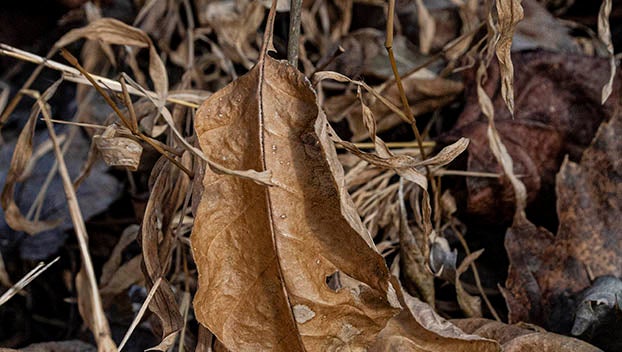Through the Garden Gate: Controversy in the garden
Published 6:28 pm Sunday, February 4, 2024

- Who knew that dead leaves could be so controversial.
|
Getting your Trinity Audio player ready...
|
My gardening friends in England and Scotland are bemoaning the rise of what they call eco-rectitude. They’re all responsible gardeners who never use pesticides or herbicides and certainly don’t grow plants on the invasive species lists for their areas. They don’t even use gasoline powered mowers or leaf blowers. Their lawns are small, but impeccably green as only English lawns can be. Nevertheless, they are being called out for loving and growing plants that aren’t natives and for being more concerned about aesthetics and pleasure than doing the “right thing.”
Some of the same attitude is showing up here. People post photos of plants online and ask for help identifying them. At the same time, many of them comment that, if the plants in question aren’t native, they’re going to remove them from their gardens immediately. Peonies and irises? They’ve got to go! Daffodils too! Their intentions are good, but not necessarily well thought out. Should we eliminate all plants that aren’t native? Even vegetables and fruits?
There’s increasing interest in replacing vast expanses of lawn with plants that benefit pollinators and other wildlife. Native plants, in general, are increasingly popular choices for many gardeners. Similarly, there’s more interest than ever in reducing the use of chemicals, modifying paved areas that impact the absorption of water, and finding substitutes for peat moss. Why is there a problem with peat moss? Because it’s harvested from bogs and fens that have sequestered carbon from the air for thousands of years. Harvesting the peat moss releases that carbon back into the atmosphere. Although bogs and fens account for only 5 percent of the earth’s surface, they contain more carbon than all of the planet’s forests. The sale of peat moss has been banned in England.
The biggest controversy, however, surrounds leaves. A decade ago, a National Wildlife Association blog post advocated leaving leaves to create a winter habitat for insects, turtles, toads, and salamanders. The slogan “leave the leaves” became popular on social media where it caused considerable confusion about where the leaves should be left and about potential negative consequences for lawns and gardeners. Homeowners’ Associations were not amused. What if the leaves harbored ticks or other undesirable critters? Soon leaves and leaf blowers became seriously controversial topics. Almost as toxic as politics.
What’s the answer? Moderation. Rake the leaves into hedgerows and perennial beds. Shred them first, if desired. Put them in compost bins so that they’ll be ready to use later for enriching the soil. It’s not necessary to leave 2 feet of leaves on all of the garden. Another alternative is to give the unwanted leaves to someone who can use them. In upstate New York, there are eco warriors who cruise neighborhoods looking for bags of leaves that they can confiscate and turn into compost. One person’s trash is another’s treasure.
Gardening should provide a respite from stress. It should be peaceful and creative, a way to relax and share joy with the community. Nevertheless, it should be done responsibly. The days of hiring vast numbers of gardeners to subdue the landscape and create other worldly follies are long gone. The pineapple pit is passe. Plant natives, especially locally generalist natives that support many types of pollinators, but don’t forget that our lives depend on many nonnative plants too. Not all nonnative plants are harmful. Reduce the use of chemicals, perhaps even the amount of lawn, but most of all, remember the value of moderation. Relax, breathe, and enjoy your garden. Embrace the dead leaves.
Dr. Cynthia Wood is a master gardener. Her email address is cynthia.crewe23930@gmail.com.



